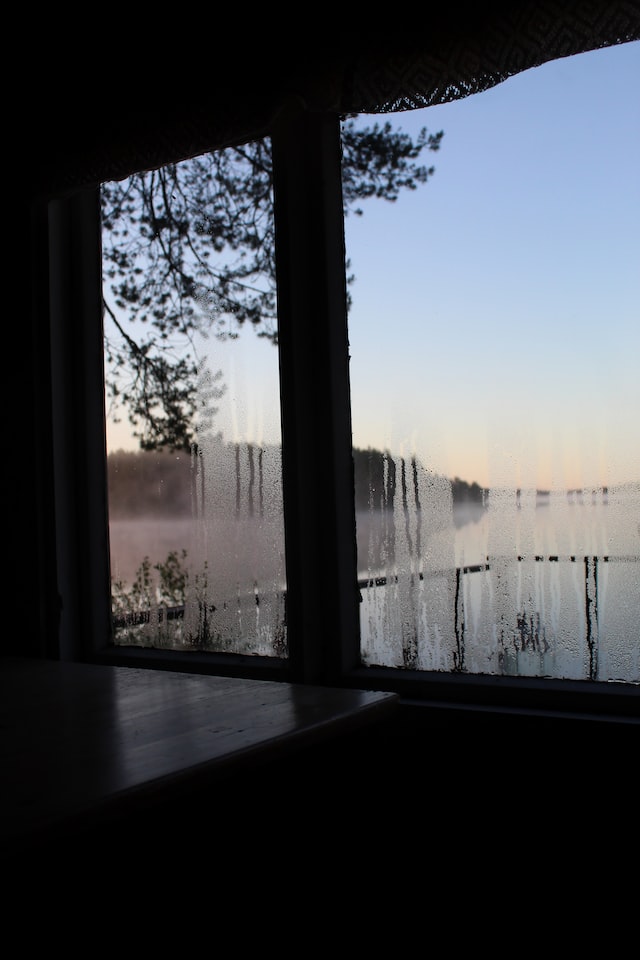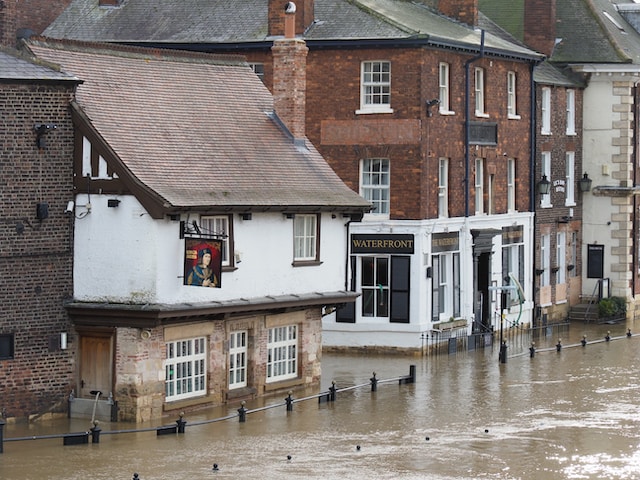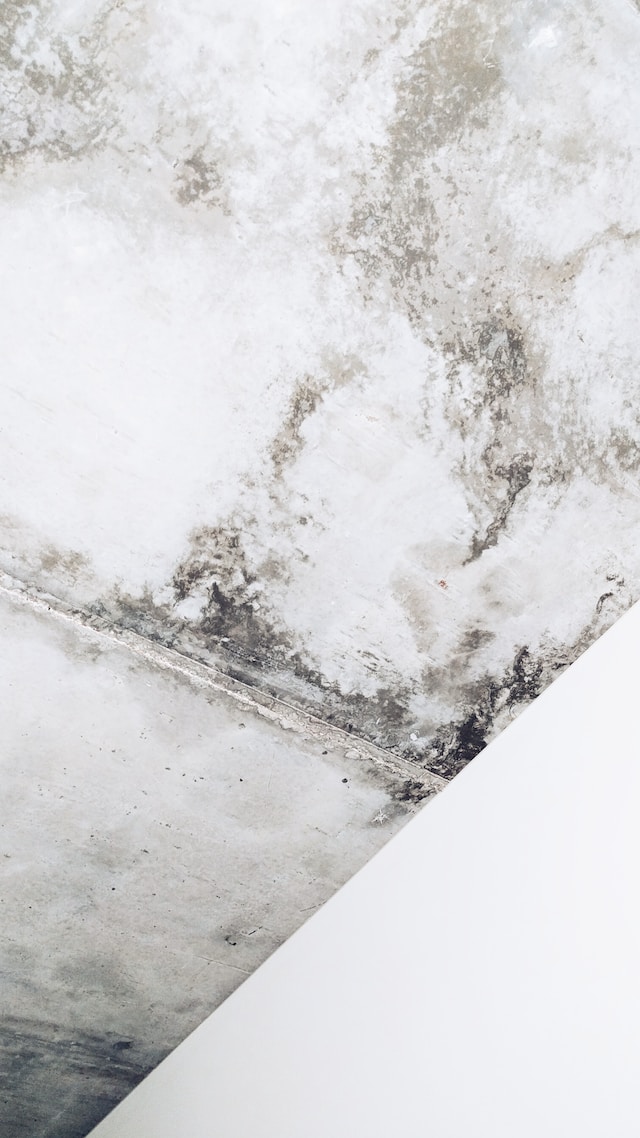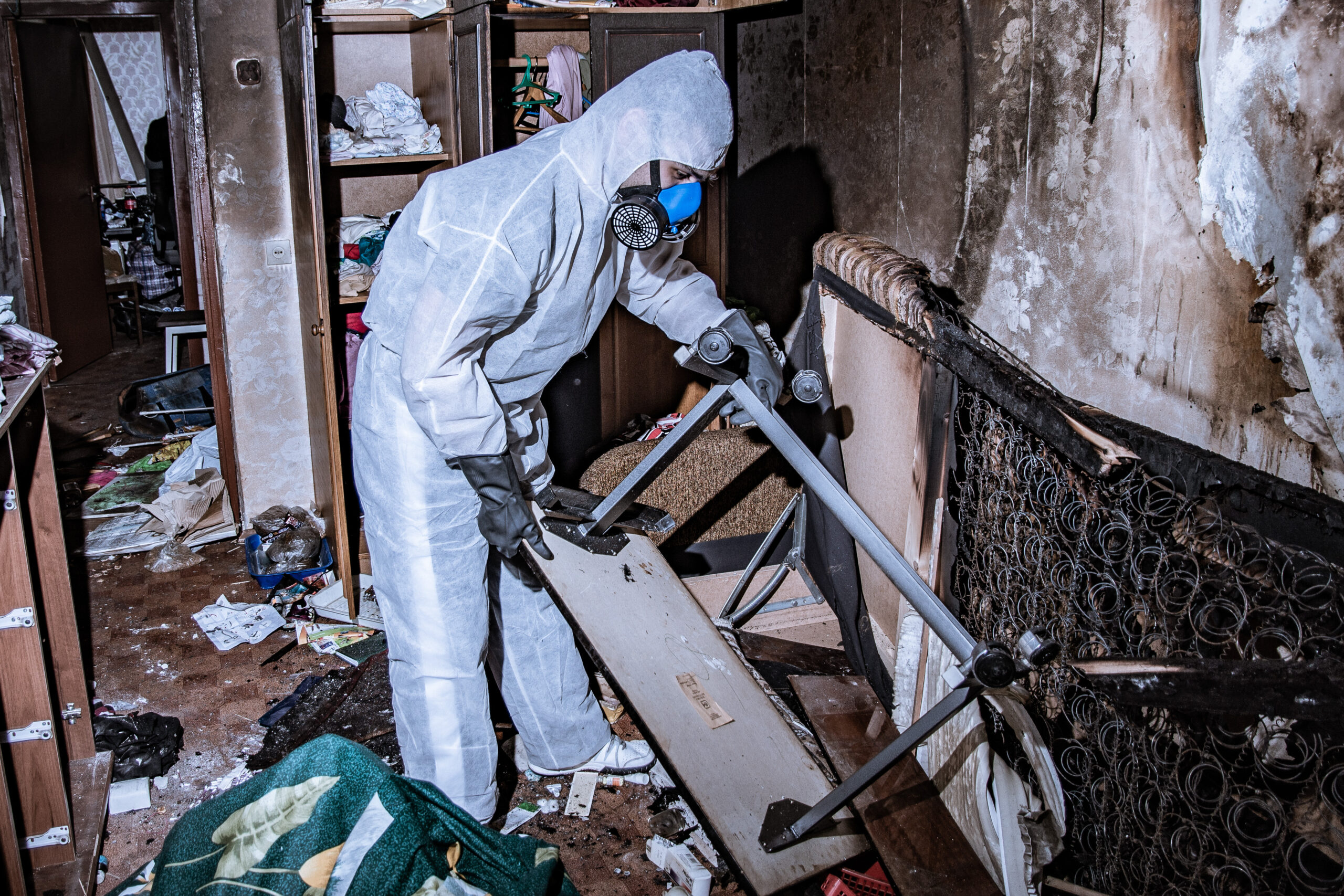Black mould removal is a crucial aspect of maintaining a healthy living environment and preserving the integrity of your property. In this guide, we’ll explain various aspects of identifying, preventing, and removing black mould from residential and commercial properties.
We’ll begin by discussing common locations for black mould growth and the health risks associated with exposure to mould spores. Then, we’ll explore preventative measures that can be taken to lower the risk of black mould infestations, such as using water detectors for early leak detection and treating leaks promptly.
When it comes to removing black mould, for those who prefer DIY methods, we’ll provide detailed instructions on how to safely remove black mould using natural remedies or commercial cleaning agents. Then, we’ll explain the importance of monitoring cleaned areas after mould removal to prevent regrowth.
Finally, if you find yourself in need of professional assistance for black mould removal or addressing underlying issues causing mould growth in your property, our guide also covers the advantages of hiring professionals to remove black mould, over DIY techniques.
Table of Contents:
- Identifying Black Mould in Your Property
- Common Locations for Black Mould Growth
- Health Risks Associated with Exposure
- Preventative Measures Against Black Mould Growth
- DIY Black Mould Removal Techniques
- DIY Black Mould Removal Techniques
- Commercial Cleaning Agents For Mold Remediation
- Monitoring Cleaned Areas After Mold Removal
- Hiring a Professional Service for Black Mould Removal
- FAQs in Relation to Black Mould Removal
- Conclusion
Identifying Black Mould in Your Property
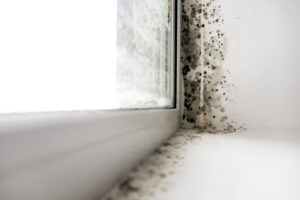
Black mould, also known as Stachybotrys chartarum, is a toxic fungus that thrives on moist cellulose-rich surfaces like fibreboard, drywall, and gypsum board. It can appear in various areas of your home or business such as bathroom showers, basement drywall, and Air Con systems. Identifying black mould early on is crucial to protect the health of you, your loved ones, your colleagues or those working and living in a property.
Common Locations for Black Mould Growth
- Bathroom: Showers and bathtubs are prime locations for black mould growth due to high humidity levels and constant exposure to water.
- Kitchen: Leaky pipes under sinks or behind appliances can create ideal conditions for black mould development.
- Basement: Poor ventilation combined with dampness from groundwater seepage makes basements especially vulnerable to black mould infestations.
- HVAC System: Air conditioning units with dirty filters or condensation issues may harbour black mould spores that spread throughout your property via air ducts. This can be a serious problem.
To identify potential problem areas in your property, it’s essential to regularly inspect these common locations for any signs of moisture damage or visible fungal growth. If you suspect an issue but cannot locate the source yourself, consider giving us at Northern Restorations a call.
Health Risks Associated with Exposure
The presence of black mould can cause serious health risks if left untreated. Vulnerable groups of people such as children, elderly individuals, and people with compromised immune systems are particularly vulnerable to its effects. Common symptoms of black mould exposure are respiratory issues like coughing, wheezing, and shortness of breath, nasal congestion or sinusitis, skin irritation and rashes as well as eye irritation or redness, fatigue, and headaches.
If you notice any of these symptoms in yourself or others within your property, it’s crucial to address the issue promptly. In addition to removing the visible signs of black mould growth, take steps to identify and resolve underlying moisture problems that may be contributing to its development.
It is essential to recognize black mould in the home quickly so that any associated health risks can be lessened. To ensure future prevention of mould growth, it is essential to implement preventative measures such as using water detectors for early leak detection and treating leaks promptly.
Preventative Measures Against Black Mould Growth
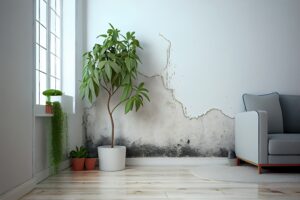
Implementing preventative measures is crucial in protecting your property from black mould growth. By addressing water damage issues early on and maintaining a clean environment, you can significantly reduce the risk of mould infestations. In this section, we will discuss various steps to prevent black mould growth.
Using Water Detectors for Early Leak Detection
Water detectors are an effective tool for identifying leaks before they cause significant damage. These devices can be installed near potential sources of water leakage such as pipes, appliances, and HVAC systems. When moisture levels exceed a certain threshold, the detector sends an alert allowing you to address the issue promptly.
Treating Leaks Promptly
If a leak is detected or suspected within your property, it’s essential to act quickly to minimise any potential damage caused by excess moisture. This may involve repairing damaged pipes or sealing gaps around windows and doors that could allow water ingress during heavy rainfall. On top of this, using dehumidifiers in damp areas can help maintain appropriate humidity levels which discourage mould growth.
Regular Cleaning with Mould Prevention Products
Incorporating mould prevention products into your regular cleaning routine is another effective way to protect against black mould infestations. Some popular options include:
- Bleach: A diluted bleach solution (1 part bleach:10 parts water) can be used on non-porous surfaces like tiles and glass but should not be applied on porous materials such as wood or drywall.
- Antimicrobial cleaners: These products are designed to kill mould spores and prevent regrowth. Ensure you adhere to the producer’s directions for correct use.
- Vinegar: White distilled vinegar can be applied directly onto surfaces using a spray bottle, then wiped clean after an hour. This natural solution is effective in killing up to 82% of mould species.
In addition to using these products, it’s important to maintain good ventilation within your property by opening windows regularly and ensuring extractor fans are functioning correctly in bathrooms and kitchens. By taking these measures, you’ll create an environment that helps prevent black mould growth while protecting your property from potential damage caused by water leaks and dampness.
Preventative measures against black mould growth can help protect your property from the damaging effects of this fungus. Yet, if a black mould outbreak has already occurred in your residence or establishment, it may be essential to use DIY approaches to remove it.
DIY Black Mould Removal Techniques
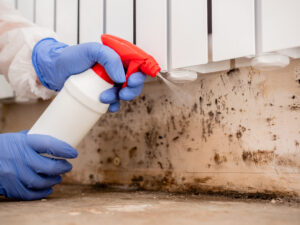
For effective black mould removal, natural solutions can be employed if a small-scale infestation is present. Before attempting any DIY removal techniques, ensure you wear the necessary protective gear such as masks (N95 or higher), goggles, and gloves to protect yourself from exposure.
Proper Use of Protective Gear During DIY Removal Process
- Wear an N95 mask or higher-grade respirator to prevent inhaling mould spores.
- Use safety goggles without ventilation holes to protect your eyes from direct contact with mould particles.
- Wear disposable gloves made of nitrile, latex, or rubber while handling cleaning agents and contaminated surfaces.
- Cover exposed skin with long-sleeved clothing and trousers for added protection against irritants during the cleaning process.
- Possibly the best form of protection would be to wear a full protective jumpsuit, though this may be impractical for you.
Natural Remedies and Their Application Methods
- White Distilled Vinegar: Pour undiluted vinegar into a spray bottle and apply directly onto affected areas. Allow it to sit for at least one hour before scrubbing away the mould using a brush. Rinse thoroughly with water afterward.
- Hydrogen Peroxide: Mix a solution of 3% hydrogen peroxide with an equal amount of water in a spray bottle. Spray the mixture onto mouldy surfaces and let the solution sit for around 10 minutes before scrubbing away the mould. Rinse thoroughly with water afterward. source.
- Tea Tree Oil: Combine one teaspoon of tea tree oil with one cup of water in a spray bottle. Shake well to mix, then apply the solution directly onto affected areas without rinsing. source.
- Grapefruit Seed Extract: Add 20 drops of grapefruit seed extract to two cups of water in a spray bottle. Apply this mixture on mouldy surfaces and leave it without rinsing or wiping off. source.
- Baking Soda: Create a paste by mixing half a tablespoon of baking soda with enough water, then apply it directly onto affected areas using a brush or cloth. Allow it to dry completely before removing any residue using warm water and gentle scrubbing.
In some cases, natural remedies may not be sufficient for larger infestations or stubborn black mould growths that have penetrated deep into porous materials like drywall or wood. In these situations, it’s probably best to look for a professional service from experienced restoration companies like ours to ensure the mold is properly removed and your property is restored to a safe, healthy environment.
DIY black mould removal techniques can be a great way to save money, but it is important to remember that the proper use of protective gear and natural remedies must be followed for successful results while also keeping you safe and healthy. When commercial cleaning agents are necessary, make sure to follow all instructions provided with the chemical to make sure you don’t hurt yourself and you get the best results possible.
Commercial Cleaning Agents For Mould Remediation
When natural solutions are not enough to tackle larger scale black mould infestations, commercial cleaning agents designed specifically for mould remediation can be an effective alternative. These products often contain stronger ingredients and advanced formulas that target the root of the problem while minimising potential damage to your property.
The drawback to this however, is that they are often toxic and dangerous to your health if handled incorrectly. You should only ever use these in closed-off environments (you don’t want your kids running around while using them!), and you should be fully protected up with safety gear/PPE.
Types of Commercial Cleaning Agents
- Bleach-based cleaners: Products containing bleach can effectively kill surface mould but may not penetrate porous materials like drywall or wood. Use caution when applying bleach-based cleaners on coloured surfaces as they’re likely to cause discolouration (we’re sure you’ve got bleach on your clothes once or twice!).
- Fungicides: These chemical compounds are specifically formulated to inhibit or destroy fungal growth. You can get brands which are a non-toxic solution that eliminates and prevents mould without harsh chemicals.
- Mould stain removers: Mould stain removers work by breaking down existing stains while leaving behind a protective barrier against future growth.
- All-purpose cleaners with added antimicrobial agents: Some all-purpose cleaners, contain antimicrobial ingredients that can help combat mould growth on various surfaces.
Tips on Selecting the Right Product
- Assess the extent of the infestation: Figure out whether you are dealing with a small-scale issue or a more extensive problem. For larger infestations, consider using stronger commercial cleaning agents or contacting a professional service.
- Consider the surface you’ll be cleaning: Check product labels to ensure they are safe for use on your specific type of surface (e.g., wood, drywall, tile) and follow application instructions carefully to avoid potential damage.
- Take safety seriously: Opt for non-toxic and eco-friendly products whenever possible. Always wear protective clothing when dealing with chemicals and keep them away from kids and animals.
- Inquire about post-treatment protection: Look for products that offer residual protection against future mould growth to minimise recurrence in treated areas.
Selecting the right commercial cleaning agent is crucial in effectively addressing black mould issues in your property. However, if you find yourself struggling with persistent or large-scale infestations despite repeated attempts at removal, it may be time to seek assistance from professional mould remediation experts like our team at Northern Restorations who have the experience and equipment necessary to handle such situations comprehensively.
Utilising commercial cleansers can be a key part of mould remediation, delivering durable and successful outcomes. Moving on to monitoring cleaned areas after mould removal, it is essential to stay vigilant in order to prevent any regrowth or further contamination.
Monitoring Cleaned Areas After Mould Removal
Once you have removed visible signs of black mould from a surface, it is essential to keep an eye on the cleaned areas for any potential regrowth. In this section, we will discuss the importance of vigilance in monitoring susceptible areas and the signs that indicate when further action may be necessary.
Signs of Regrowth and When to Take Action
Mould can be persistent, so it’s crucial to watch out for any indications that it might be making a comeback after your initial cleaning efforts. Some common signs of regrowth include:
- New mould spots: If you notice new patches or discoloration appearing on previously cleaned surfaces, this could suggest that mould has returned or wasn’t entirely removed the first time.
- Persistent musty odours: A lingering musty smell even after thorough cleaning could indicate hidden mould growth behind walls or other hard-to-reach places. This could also be a sign of damp.
- Allergic reactions or respiratory issues: If occupants continue experiencing allergy symptoms or breathing difficulties despite your removal efforts, there may still be undetected mould present in the property.
If these signs persist despite repeated attempts at removing black mould yourself, it’s likely that the infestation is larger than initially thought. In these cases, hiring a professional service would be the best course of action.
The Importance of Vigilance in Monitoring Susceptible Areas
To prevent future outbreaks and protect your property from extensive damage caused by mould infestations, regular monitoring and maintenance are key. Here are some tips for staying vigilant about potential problem areas:
- Maintain humidity levels in areas prone to moisture build-up by using dehumidifiers, air conditioners, or exhaust fans.
- Regularly inspect and clean susceptible surfaces like bathroom tiles, basement walls, and HVAC systems with mould prevention products.
- Check for water leaks around plumbing fixtures, appliances, roofs, and windows. Promptly repair any issues you find to prevent mould growth caused by excess moisture.
- Avoid storing items like cardboard boxes or wooden furniture directly on damp basement floors or against exterior walls where condensation may occur.
By staying proactive about monitoring your property for signs of black mould regrowth and addressing potential causes early on, you can help protect the health of occupants while preserving the structural integrity of your home or business.
It is essential to monitor cleaned areas after mould removal in order to detect any signs of regrowth and take necessary action. Hiring a professional service for black mould removal can provide many advantages, such as the ability to identify underlying issues causing mould growth.
Hiring a Professional Service for Black Mould Removal
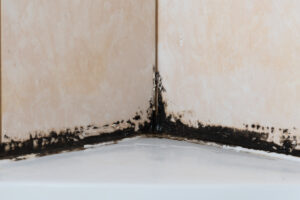
While DIY methods can be effective in removing small-scale black mould infestations, it is crucial to understand the benefits of hiring a professional service like our team at Northern Restorations for larger and more persistent problems. Professionals have the expertise, equipment, and experience to quickly, efficiently and safely remove black mould from your property while also identifying potential causes of water damage and providing guidance on prevention.
Advantages of Using Professional Services Over DIY Methods
- Safety: A professional team will take all necessary precautions to ensure that the removal process is carried out safely. They are trained in handling hazardous materials and using appropriate protective gear such as masks (N95 or higher), goggles, gloves, etc., reducing health risks associated with exposure.
- Efficiency: Professionals use advanced techniques and specialised cleaning agents designed specifically for mould remediation purposes. These products offer better results than natural solutions when tackling larger scale infestations.
- Detection: Experts can identify hidden sources of moisture that may not be apparent during a casual inspection by homeowners or building managers. This helps address underlying issues causing mould growth before they escalate into more significant problems.
- Precision: Trained professionals know how to properly assess affected areas without causing further damage to surfaces or spreading spores throughout other parts of your property during the cleanup process.
How Professionals Identify Underlying Issues Causing Mould Growth
A thorough assessment conducted by our experienced technicians at Northern Restorations includes several steps aimed at figuring out the root causes behind black mould growth within your home or property. These steps may include:
- Examining surfaces for evidence of water-related issues, e.g., discolourations or stains on walls and ceilings.
- Using moisture meters to detect hidden dampness within building materials like drywall, wood, and insulation.
- Evaluating the effectiveness of your property’s ventilation system in controlling humidity levels indoors – a crucial factor contributing to mould growth.
- Identifying potential plumbing issues that could be causing leaks or excessive condensation on surfaces where black mould thrives.
In conclusion, by hiring a professional service like Northern Restorations for black mould removal, you can rest assured that your property will be thoroughly assessed and treated by experts who understand the complexities involved in effectively eradicating this harmful substance. Not only will they remove existing infestations but also provide valuable insights into preventing future occurrences through proper maintenance practices and addressing underlying causes of water damage. Don’t risk your health or the integrity of your property – let professionals handle large-scale black mould problems with confidence..
FAQs in Relation to Black Mould Removal
Can Black Mould be Completely Removed?
Yes, black mould can be effectively removed using proper cleaning techniques and products. However, it is crucial to address the underlying issues causing mould growth, such as moisture and humidity problems, to prevent future occurrences. Regular monitoring of susceptible areas is also essential for early detection and prompt action.
What Kills Black Mould Instantly?
A solution of one part bleach to ten parts water can kill black mould instantly when applied directly on the affected surface. Other effective solutions include hydrogen peroxide or white vinegar. Always wear protective gear during the removal process and ensure adequate ventilation in the area being treated.
Why is Black Mould So Hard to Remove?
Black mould is difficult to remove because its spores are microscopic and easily spread through air currents or physical contact with contaminated surfaces. As well as this, it penetrates porous materials like wood or drywall deeply, making complete eradication challenging without specialised equipment or professional assistance.
How Toxic is Black Mould?
Black mould produces mycotoxins that can cause various health issues ranging from allergic reactions (itchy eyes, skin irritation) to more severe respiratory problems (asthma attacks). Prolonged exposure may lead to chronic conditions affecting immune function and neurological systems. It’s important to take precautions when dealing with this type of fungus.
If you suspect black mould in your home or business, contact us for professional black mould removal services. Our team of experts uses advanced techniques and equipment to ensure complete removal and prevention of future growth.
Conclusion
In conclusion, black mould is a serious issue that can cause health problems and property damage. It’s important to identify the signs of black mould growth in your property and take preventative measures such as fixing water leaks and regularly cleaning vulnerable surfaces. If you do need to remove black mould yourself, there are several DIY methods available but it’s crucial to wear protective gear for safety.
However, if you’re dealing with extensive or recurring black mould growth, it’s best to hire professional mould removal services who have the expertise and tools needed for effective remediation. At Northern Restorations Ltd., we offer comprehensive black mould removal services for both residential and commercial properties. For comprehensive black mould removal services for both residential and commercial properties, contact us today to learn more!
Don’t let black mould continue to harm your property or health! Contact Northern Restorations now for expert mould removal services.

